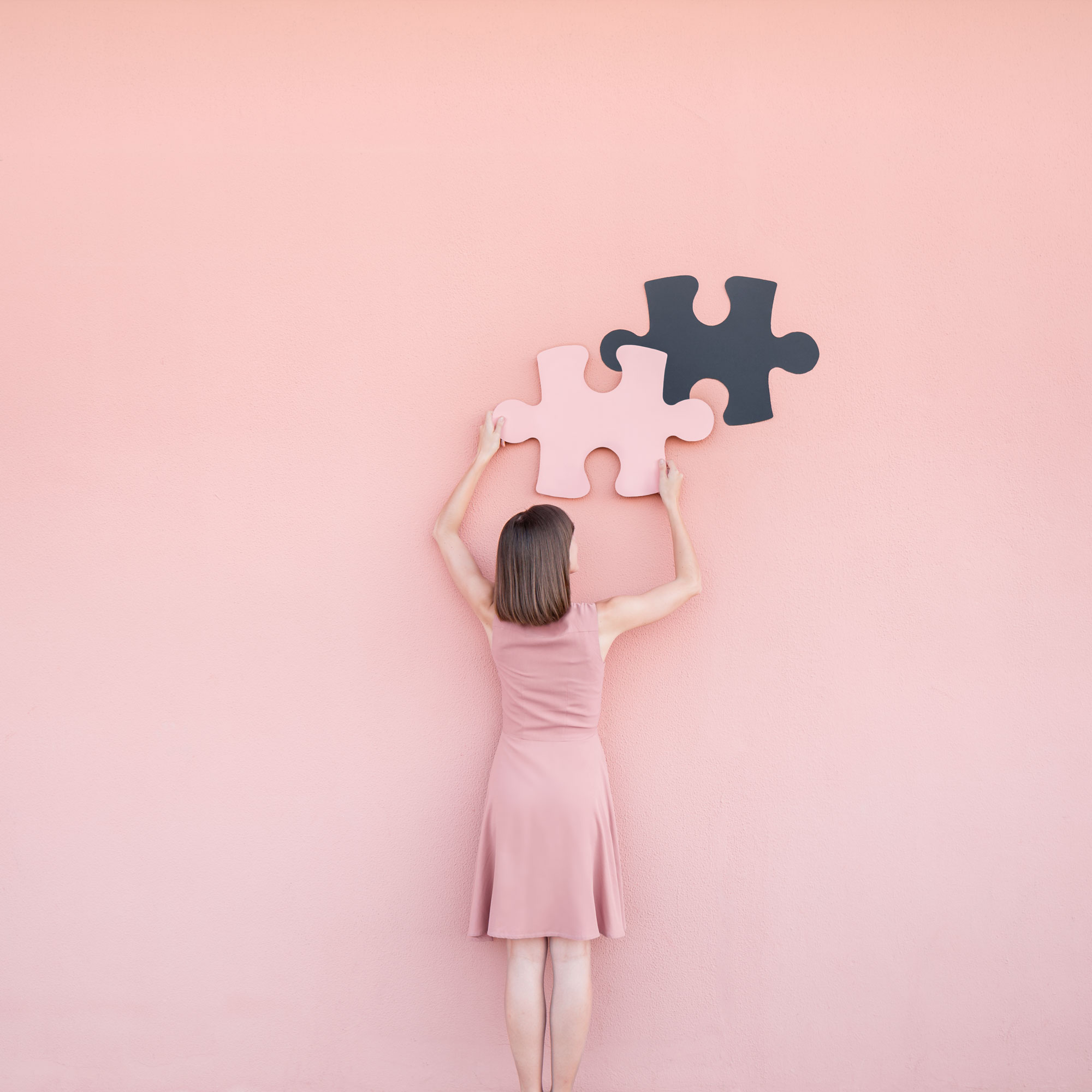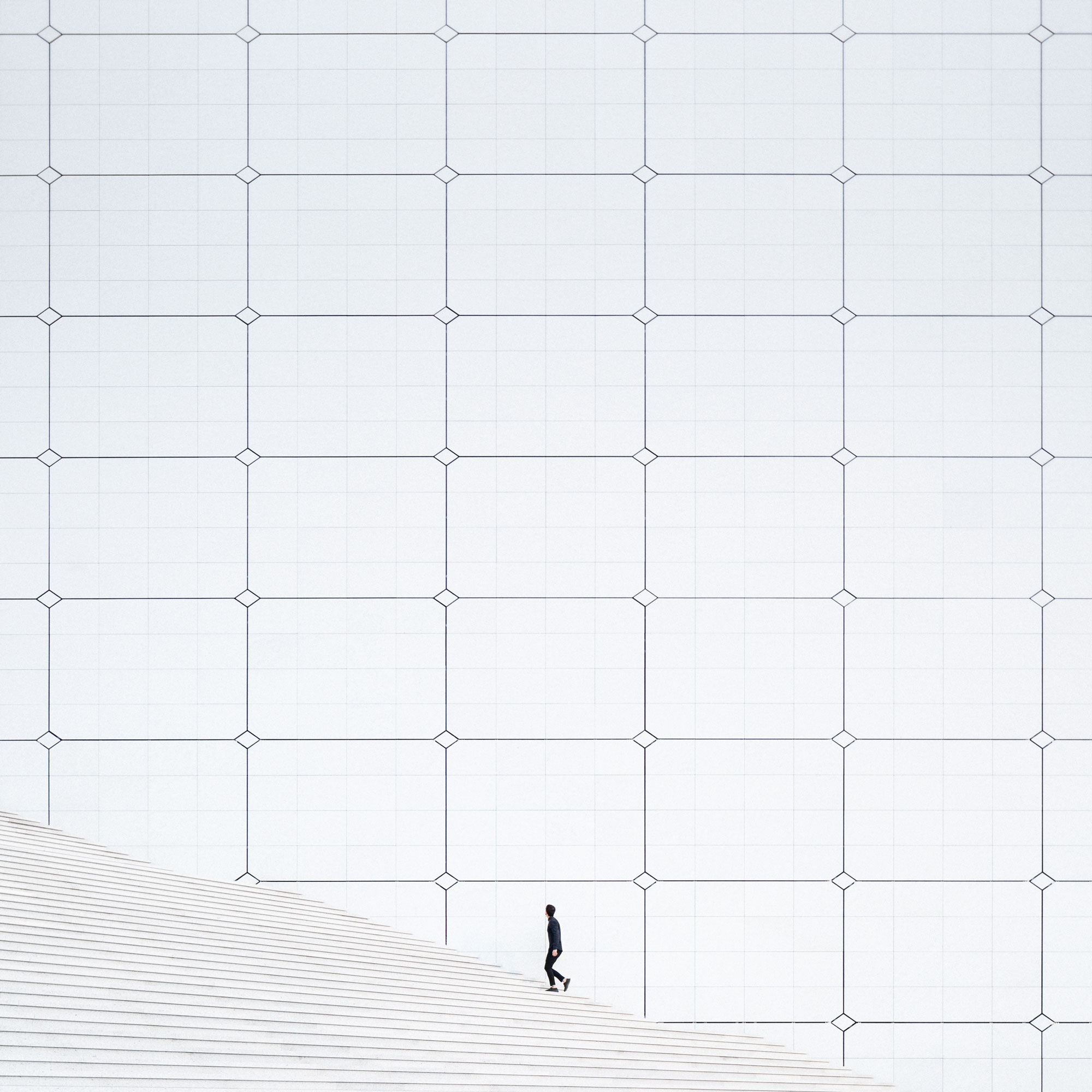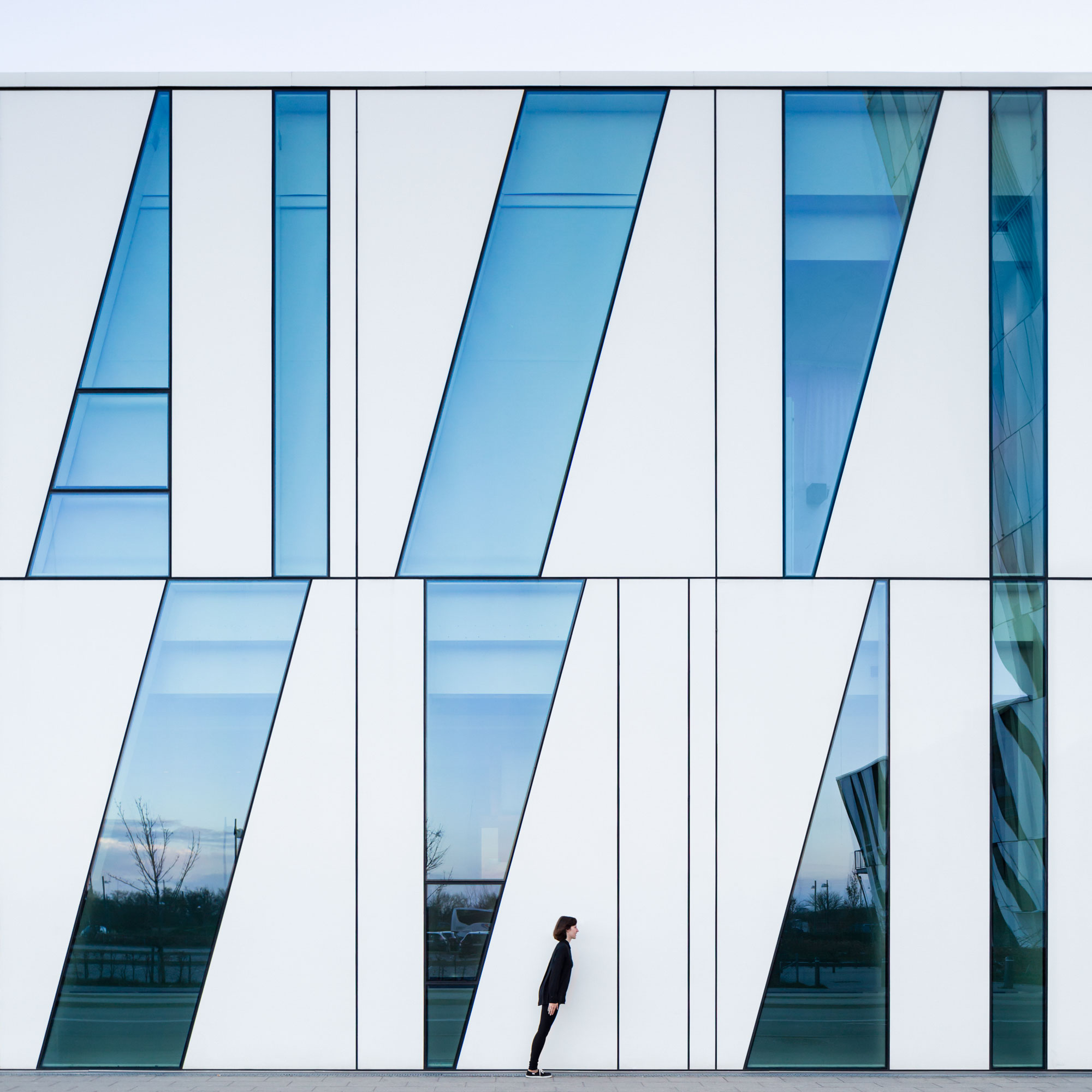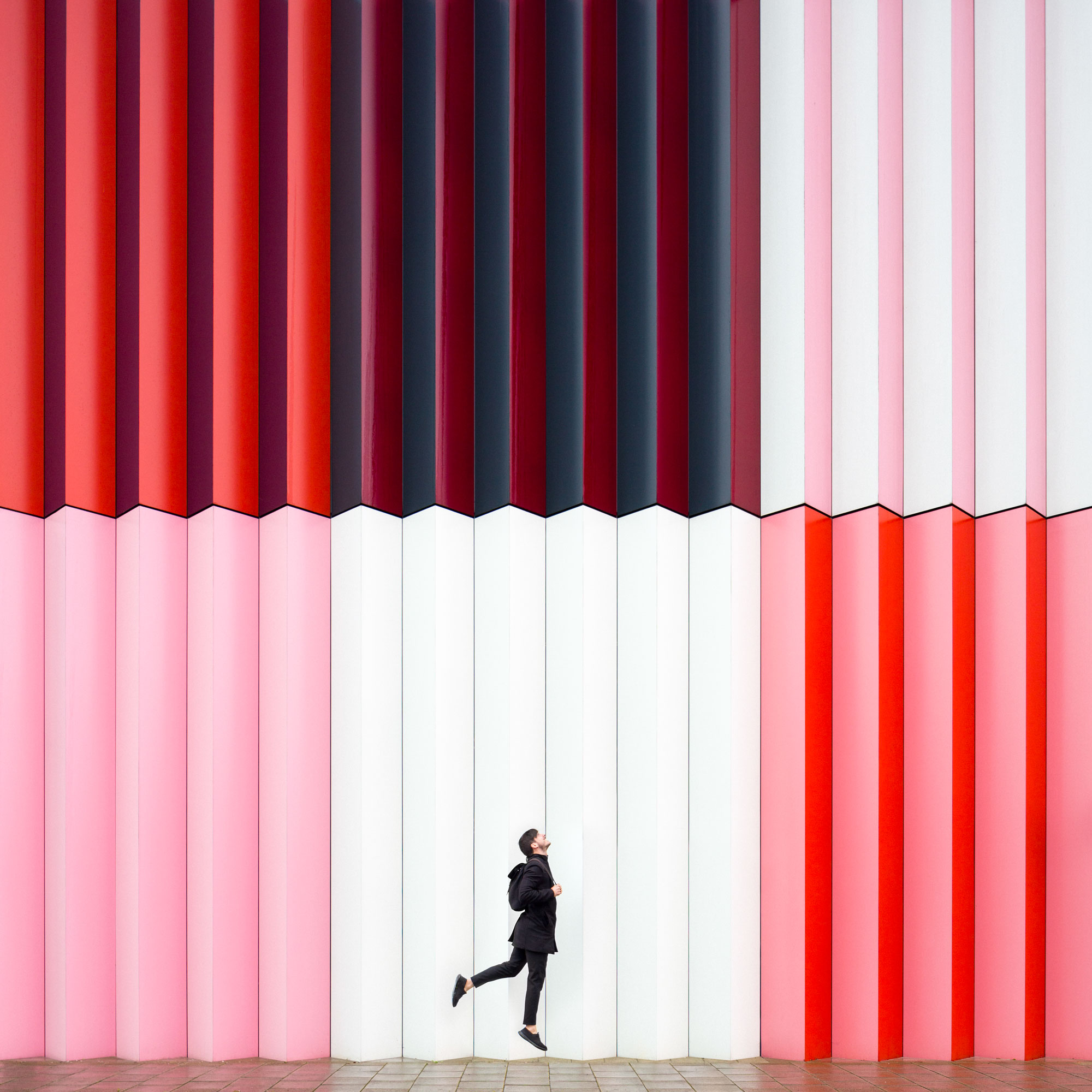We recently caught up with Daniel Rueda—self-taught photographer, storyteller and architect—to talk minimalist photography, perfectionism, and his very popular and inspiring Instagram page.
Developing a minimalist approach to photography is something you’re known for. Why this style and what influences lie behind your unique visuals?
I think part of it is the fact that I come from an architectural background as I am an architect myself. So, it’s kind of a minimalist approach to architecture which has defined my career as a student and as an architect. But what’s also very important to me is in photography, rather than architecture, whatever I try to do, I try to communicate just one thing. One story, one simple message. So, as I use the minimal objects and elements in a story, it’s easier to communicate. That’s why in my images I try to come up with a minimalist background, minimalist setting or something like that. The fewer objects you need to identify, the easier it will be for you to understand the message of the story I am trying to portray each time.
With a modern, sophisticated yet playful aesthetic, your photography has gained a very large following on Instagram. What has been your favorite scene to shoot and why?
In every picture, whenever we try and tell a different story, whenever we try and come up with a different idea, we consider where we should try and make it. How do we take the photograph, or what props should we be using? What’s the clothing we are going to wear? So, it’s a complicated process and we do many different projects. Although, having to choose one is very simple in that people have said out of our recent collection, the one they enjoy a lot is where you can see the model wearing an orange hat. Like she’s a visual trick, where you can see the egg in the wall when it is instead a lady looking at the white shape in the wall. I think that is a very unique photo because of the process it took to produce it—it was for me, the perfect ending. From concept to reality, it was quite simple and we thought about the idea, in Anna, who is 50% of the responsibility of every photo. We drew this image and did some very tiny sketches and we began thinking “we need a grey wall, we need this type of clothing where we can play with the types of pitch.” This way, we can understand the shape of the egg. Then we needed an orange hat, so we had to buy a hat and paint it orange. So, we did that and then we just needed to go to the location and take the photograph which indeed, was the easiest part. The whole preparation was a lot harder than the process of taking the photo itself.

What tools do you use to make your photography look so intriguing? How much time do you spend editing each photo?
That is a very interesting and unique thing about this dialogue, as people tend to ask us how much a photo is worth. Especially as one photo shows these types of visual tricks. What is very interesting for us is not using Photoshop on the images. Of course, you use types of software to edit the brightness, edit the levels of the towers to make it pop up. However, we don’t like to overly edit the photo. We like to do everything by hand, so then when you view the image, we try to make things as real as possible, rather than digitally enhanced. This photo with the egg is the perfect example. We preferred to paint it by hand with some wet paint, in the color orange. You don’t really need to use Photoshop, even though it would be much easier and faster. If the preparation is right, the concept comes to life.
Can you give us an insight into the dynamics behind your photos? Do you take them all yourself? Or do you get help from others to in order to create these artistic shoots?
The images which are in my gallery are a combination of two people which are myself and Anna, who is the subject in most of my photography. The workload is simple. We are always trying to bring different ideas for images and then we try to come up with a new concept. We sketch some ideas at the beginning of the process, to get a simple drawing—the most minimal drawing we can use. Then we can get a shot which is so simple with so few elements—so we can instantly understand the image. Then we try to go into the processes behind each photo. Where we go, we need this type of clothing and must show it at this type of elevation. As sometimes, you need an extra sense of scale, as you might need extra space. You need to clearly understand what the subject is doing in the image, so you need to be closer, you need to be in such a spectacular background that you can go for the photo. But other times, you need to showcase the larger architecture which is much more difficult. And then we scout the location where we identify the best time to go there for the shoot. We always use the same type of light, which is when it’s about to go dark. Or the moment when it’s about dawn and sunrise is near. Those time frames where the lighting displays remarkable rays and when you do not have shadows, that’s the kind of light we are always looking for. We have the location, the props, and then we just need to set up the camera and take the photo.

We often see a female model in many of your visuals. Who is this mysterious model?
Anna Devís is my partner and runs the Instagram page with me: you can also follow her here. She is currently working in an architectural studio in Valencia as the head of communication. We live and work together, we are both architects, and we met whilst studying architecture at school. We both enjoyed taking photos as a couple when we were traveling so instead of taking selfies we tried to show something we particularly loved about the place, in a very artistic way. During this process, we discovered that our work was actually much more enjoyable when we wanted to tell a story. So we started to think more in-depth about building a concept behind each photo, even before we started traveling. Anna is the creative mind while I am focused on the technical aspects of our work: we are a good balance together.
Do you travel often for your work? For the photoshoots outside of Valencia, how do you choose those specific locations?
We do travel a lot for creating new photos, and shooting abroad is certainly not as easy as when we are working in our city, Valencia. Here, we know each corner where we could capture great photos. We know the exact time to take the best photo. When you are abroad, you need to control these factors more carefully and it is not that easy as you don’t have much time. So, sometimes, you only get one or two days in a city and you have to take a couple of photographs. You have to seek out and scout the right location and schedule which will be the best time to take photos. Whenever we travel, we try and do our homework beforehand. We study the location carefully and decide to shoot during the sunset, for example. Therefore, we look at the sunrise/sunset time so we can go there when there are no people and just a little sunlight in order to take a unique shot. Shooting abroad requires more preparation, and sometimes there could also be unexpected surprises. For example, once we arrived at a building building we wanted to use only to discover it was under restoration. Therefore having a plan B is always good.

What’s the most challenging aspect you’ve faced when capturing compositions? And how did you get past it?
Finding the perfect idea for a photo. We don’t post that often as we have to try and tell a different story in every image. It’s not easy to come up with new concepts every day: we tend to post once a week. We’re very lucky to be working with many clients, companies and agencies because they always give us a specific brief. You have to come up with an idea and solution which is clear with our workload and aesthetics. Bringing all of these elements together is very complex and challenging but interesting. It is not so easy to find the right concept for a picture that promotes a car, for example, and communicates it to our audience without it appearing too commercial. You have to do something that is very coherent with your work. Before posting a picture I always ask myself: “Is this our type of style?” We often also have to reject some requests for collaborations even if there is a big budget behind it. We don’t want our images to be shocking to our audience. We want to give them what they expect: beautiful, architecture-related images, with a minimalist approach. There are high expectations and we want to deliver what we do best.
During your photography career to date, you have collaborated with various global companies including Bacardi Limited, Coca Cola and Netflix. How do you see your brand evolving from here?
Working with brands is very challenging. They give you a problem which you need to solve with photography. We are always keen to work with clients related to our field of expertise. For instance, it’s always great to collaborate with an architectural studio that wants to promote some of their buildings in my gallery. Our audience is composed of many architects or designers so it would be very interesting to create images for them. Alternatively, we also like to work with fashion brands as in every image we also have to consider the right clothes to use. We are working on a lot of projects for many different companies at the moment, including collaborating with tourism boards of different countries. For example, we have been in Italy discovering Bologna and Milan recently. We have also been in Austria photographing Vienna, and a couple of months ago we visited Argentina. We look forward to seeing what other cities we can explore through photography and architecture.

Your photos are clearly a great source of inspiration to your followers including us when curating our color series on Instagram. How connected are you to your audience and does this impact your approach to photography?
When I say I want to be honest with my work, I mean I want to be honest with my audience. I do what I do because of them, the people who follow me. I work the way that I do today because there are people who appreciate and support my work. I try to be as communicative as I can with them and I always capture my photos thinking about the people who are going to be seeing them. I always write my stories thinking: “Are people going to enjoy this photo? Are the images up to the standard which they expect from me?”
I would say the people who are following me are very inspiring. They force me to be more creative and to ask more of myself. Whenever someone asks me what my favorite photograph is, I always say it is the last one. I try to be better as I go, more precise and learn every time I'm on a shoot. I know there are going to be people watching and giving feedback on my photos. They are very inspiring to me and are one of the reasons for why I do what I do. I always try and have conversations with them. I don’t comment back as much as I would like as I have way too many things to do. However, I always appreciate the fact that someone has spent some time not only to admire my image, not only liking my image but also writing about it. I thank them by replying with a nice comment which would eventually get a new conversation started. I try to speak to them as I owe them so much, I want to be as supportive and thankful as I can.

How do you think your work will change in the next few years?
I would like to step-up the quality of the infrastructure we use to take photographs. I would like to have better camera equipment. Not that it is that important in the type of photography I take but as I said, I’m very precise and pinpoint with my content. I always try and edit every single detail so that it is perfect. I always try to be better in my profession, to come up with better ideas, to be more creative and funny. The whole idea is to make people smile. I’m not going to make anyone laugh from what I do, but If I can get one person to stop and admire my image and wonder about the building that the photo was taken in, that is good. I want to bring a smile into the lives of my followers—that’s what it is all about.